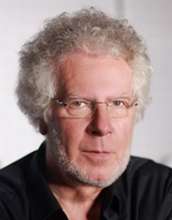Mušič Marko

Mušič Marko
Academic titles:
- professor Doctor of Science
Membership in the Academy:
- corresponding member – Department of Fine Arts (5/10/2012 – …)
Curriculum Vitae
Marko Mušič was born on January 30, 1941 in Ljubljana. His impressively extensive and prolific architectural opus can be divided into three reciprocally intertwined creative periods.
The first period is marked by the breakthrough of his architectural work already in his student years and immediately after graduation. That period was marked by numerous first places in architectural contests and awards throughout the former Yugoslavia. His project entitled Vila Bled, presented at the Paris Youth Biennial in the end of the 1960s attracted great domestic and international expert attention. This was a period of acquiring valuable experience through a successful realisation of an entire range of projects, on one hand accompanied by the highest professional acclaim expressed by means of most prestigious awards, and with all self-confidence required for veritable added value towards poetic dimensions in architectural creations. Mušič’ distinctly original architectural drawing, its execution and his widest possible urbanistic and architectural vision derive from a philosophical, popularly cultural, and above all, rich spiritual background.
His second period is characterised by the realisation of his architectural projects, predominantly commissioned after successful candidacies in public contests, mostly for cultural purposes. These projects include “halls” – public facilities planned in different regions of the former Yugoslavia, which were created in the spirit of respective particularities of the immediate rural-urban environment. With great care and consideration, Mušič devoted his time in the 1970s to in-depth studies of new architectural forms, balancing the ever increasing universal tempo, functional simplicity and superficiality. He tackled different types of architectural tasks, and has managed, to present day, to maintain for them the dignity of true architecture.
Since the early 1980s, Mušič’ work is a synthesis between planned “utopias” and creative interventions, expressed verbally: as architectural endeavours which are a universe of symbols and an atmosphere, which turns creations of civil engineering into the universe of architectural art.
In the imposing opus of Mušič’s architectural realisations, exemplifying a complete mastery over a wide spectre of architectural tasks and transcending their artistic boundaries, the following buildings are worth mentioning: The Zagreb Hall Dom 7. sekretarjev Skoja in Zagreb (1966), the Skopje university campus (1975–1978), the Bosanski Šamac memorial hall (1975–1978), the Franciscan church in Kotor Varoš near Banjaluka (1986–1991), the first ever Slovenian dug-in public facility, the Church of the Incarnation of Christ in Dravlje in Ljubljana (1980–1985), the so-called Nove Žale in Ljubljana (1982–1988), the Novo mesto bus station (1989), a contest project for the Teharje Memorial Park (1993), a number of residential houses, public monuments and interior designs (Domus Slovenica in Vienna ( 1987–1988), the Ljubljana central train station hall (1983–1988), and the atrium or the Prešeren Hall of the National Museum (1987–1991) in Ljubljana, and the awarded contest projects for the new Passenger Terminal (1980), new National and University Library (1989), and the Nuncio (1998). Mušič also renovated the existing train station (1996) and the National and University Library by Jože Plečnik (NUK, 1999), both in Ljubljana.
Mušič’ work represents an obvious generational leap in Slovenian modernism. It is most recognisable by its witty spatial versatility and harmony, abounding in symbols of beauty and sense.
In 2003, the SASA Assembly elected Marko Mušič as an Associate Member, and in 2007 a Full SASA Member. From 2010, he was the vice president and then president from February to May 2014.
He was elected as a correspondent member of the Croatian Academy of Sciences and Arts in 2012.